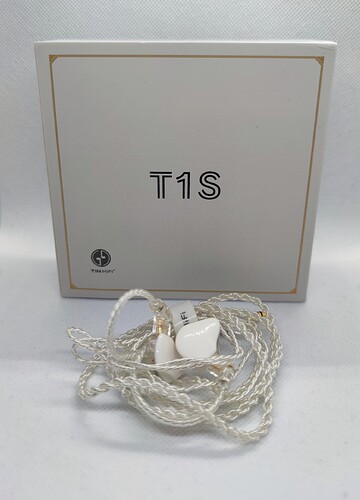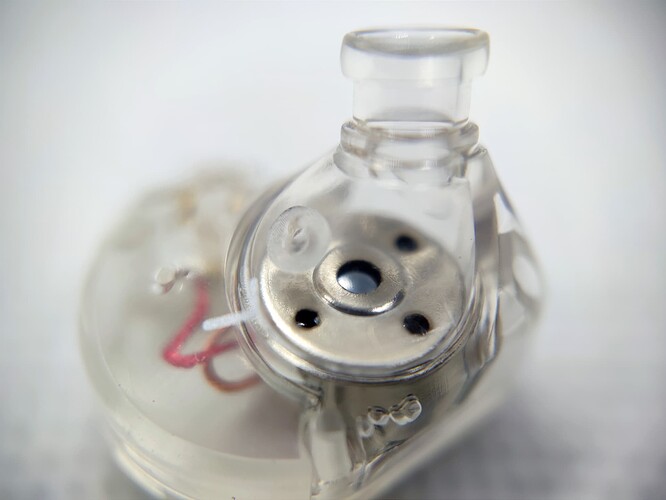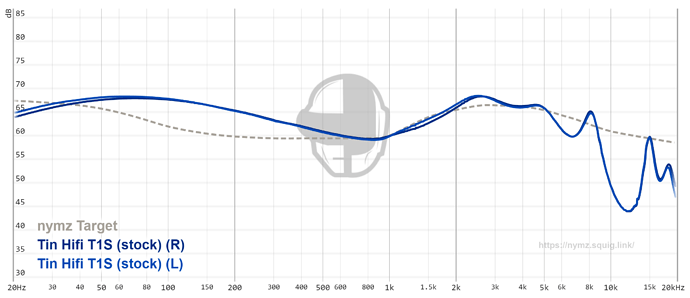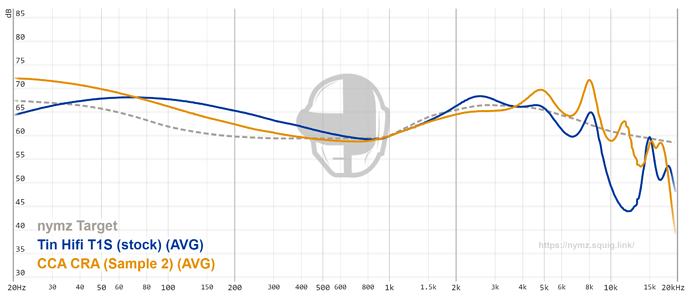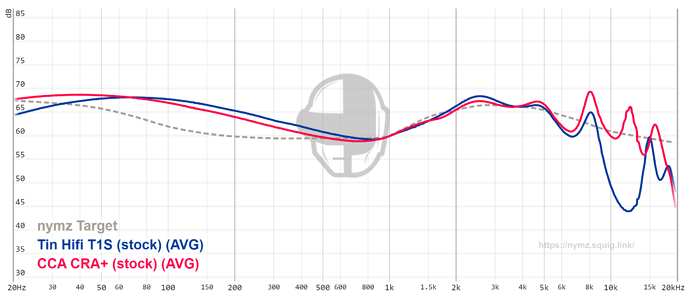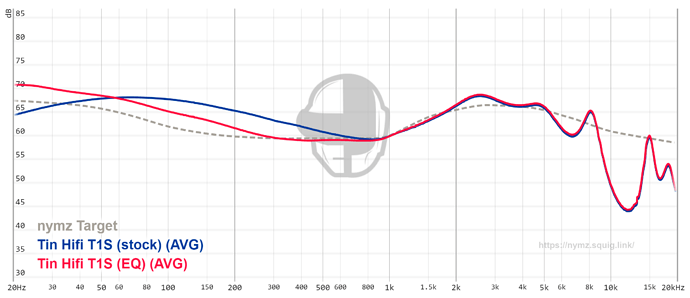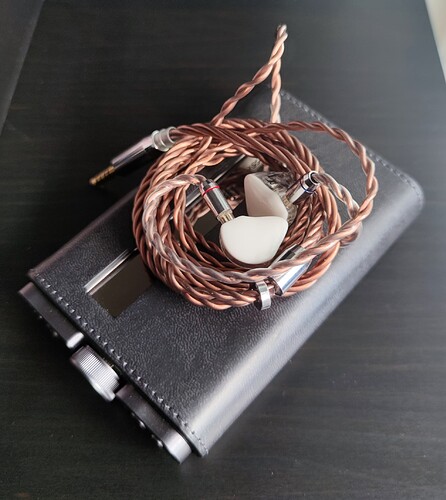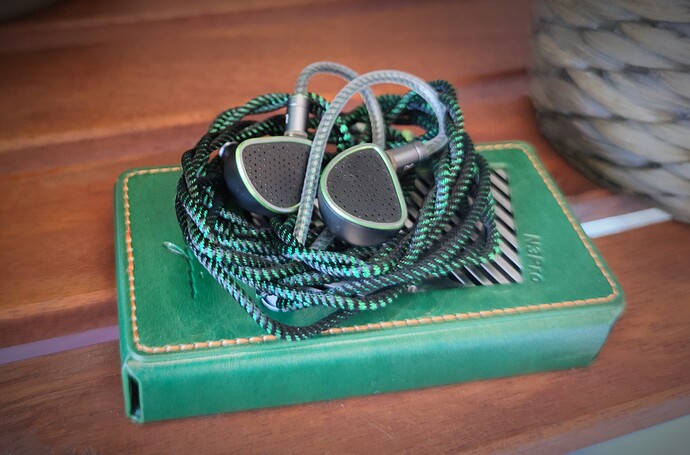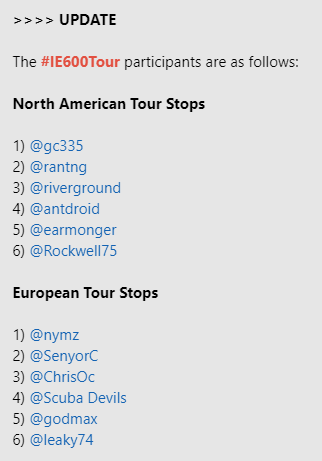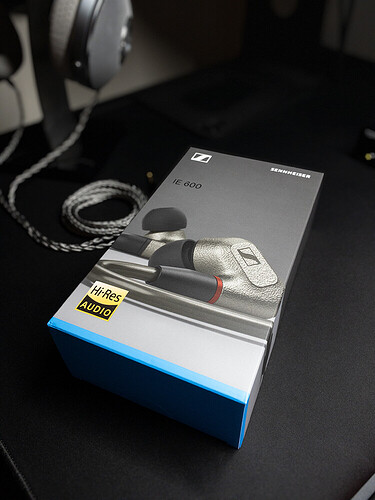Budget Series - Pt. 2: Tin Hifi T1S
Disclaimer: This unit was sent by Linsoul for free in exchange for a simple review on it. No further incentives were given and everything you are about to read are my own thoughts and opinions. Thanks once again to Linsoul team for reaching out and supporting me with these.
Driver setup: 1 Dynamic Driver (Beryllium coated)
Price: 20$
Product link: Linsoul
Prologue
Tin Hifi is no stranger to anyone. Focused mainly around the budget segments, Tin has paved its own way into everyone’s eyes. With two main line-ups, the T and P series, there’s an offer for everyone.
P series are the planar segment, which we will not talk about today, and of whose I’ve only heard the P1 Plus (while I keep my eyes on P1 Max), but we are going to rather talk about the T series, that have a DD as a core, either it’s alone or accompanied by something else.
Just like the planar craze that the P series are trying to keep their blood on, they are also focused on another market war: the ultra budget segment. Kicking in at 20 USD, T1S is the latest offer of Tin Hifi, with a single DD under its hood, claiming to have a beryllium coating on it. For those who don’t know, beryllium was very much appreciate once it got more common and accessible to the wallets, so this got my curiosity to say the least - I’m still a firm believer that a better tuning and/or implementation go a longer way, but it’s great to see this kind of stuff around this lunch money price, at least to some.
Given the influx of ultra budget IEMs lately, it’s not hard to imagine the competition will be rough, so let’s dive right into it.
Non-sound characteristics and accessories
I know it will come as no surprise, but the package, accessories and build quality are on the budget side of the budget segment. What do I mean by that?
The shell is very small and thin, made of plastic and it gives it one of the cheapest feelings I’ve ever experienced on hand. Despite me feeling I could easily break it with my hands if I throw it around, this doesn’t bother me much as it’s light as a feather and has a rather easy fit to my ears, which I feel someone who has fit problems with bigger IEMs would appreciate.
As far as accessories go, once again, it goes as expected for the price: cable is not the worst I’ve seen but it’s very thin, tangle easy and hardware is made of plastic - comes in 3.5mm only. Regarding tips, the ones included are very wide and short, which I actually think work with this IEM, but I’m sure they won’t fit everybody - be ready to tip roll on this one, - while the biggest size almost doesn’t seal on me.
Sound characteristics
Tuning
We are in May and for those who live in south Europe at the moment, the weather will match this Tin pair, as they are extremely warm.
The sub-bass is a bit rolled off and is noticeable when compared to the mid-bass (Hans Zimmer - Dream of Arrakis) - it for sure could use some more extension and rumble. I would say it is on the average side of tight (Kendrick Lamar - Backstreet Freestyle), tilting towards the slower side of the speed metrics (Polyphia - 40oz).
This is actually a double down for my preferences as mid-bass is too elevated, and let me explain to you why with some examples. When listening to *Throw Away Your Television’*s intro, Flea’s bass is way too forward and blurred. This causes mainly two problems. First problem is that all this elevation and shelf shape affects the bass directly, giving it a sense of lacking detail and texture and also not feeling too micro-dynamic as expected - kickdrums aren’t thunderous as you would imaging from the graph (Ghost-Note - Shrill Tones).
The second one is that the mids are overly affected by its bass bleed, which causes the usual lack of transparency I look for. A great example of this would be pianos that get mushed into the rest of the song, sounding too thick and lacking some detail (Hania Rania - Glass or Nils Frahm - Says).
As for vocals, the male ones (Michael Bublé - Feeling Good) feel a bit husky while the female ones (Adele - Daydreamer) lack a bit of bite, sound nasally in some tracks, but never shouty which, lesser evil to be honest.
To me the treble is the best tuned region of this set. It’s not perfect, but it’s slightly different than what we get used to in this price range: no overcooked peaks attempting to give false micro details, no fatigue whatsoever and on the dark side, which I usually prefer (Iggy Pop - Lust for Life). It has some extension but its mid treble is clearly on the darker side.
Technicalities
As expected for 20 USD, the technicalities are mostly sub-par. Stage is rather small without much depth or height, imaging is not great and the detail level is low (Agnes Obel - Curse).
Timbre is very good for its price point, and I would say it’s one of the T1S strongest points in this department.
Separation and layering aren’t the best, but if you factor in the stage size and warmth, it’s not too shabby.
While listening to Polyphia - Playing God I got some sense of macro dynamics, which is again good for the price range, but the notes where a bit mushed up together and lacked definition between strings.
Again, this is what it’s expected for a 20 dollar IEM, but the market has become a minefield around this segment, so the competition is tougher than ever.
Comparisons
- CCA CRA (with Final E tips)
Where the T1S can sometimes feel small and congested, CRA feels airier but also thinner - this is pretty evident to me on female vocals, where the presentation is good due to this sense of “air”, but the vocal replay feels more natural on the T1S. The CCA monitor shows a more “wispy” presentation, that also comes as more detailed, while the T1S is more softened out and organic.
The trend follows as we move up to the treble region. The darker replay of the T1S gives it once again a safer reproduction - fatigue and overcooked free. The extension is more present on the CRA where I can see it shine more on more treble demanding libraries. To me, I would take the T1S treble if I had to choose one.
Doing a full reverse to the start line, the bass is also pretty different between the two. CRA focus on the lower regions where T1S focus on the mid frequencies, at an arguable cost of mid clarity. Regarding intangible characteristics of the bass, CRA is the clear winner thanks to its speed, impact texture and tightness, making it better suited for more technically demanding bass libraries - double kick drums or guitars comes to mind.
Regarding technicalities, T1S is better suited in the timbre tests with my library, where the CRA shows a better capability of producing a better picture of the stage. Thanks to the tuning, T1S does also come out as less resolving overall.
- CCA CRA+ (with BGVP W01 tips)
Just like its older brother and if you read the above comparison, the CRA+ will have basically the same turnout when battling Tin’s IEM. The reason I decided to include the CRA+ it’s due to the tuning, making it a more fair fight.
If a couple days ago I just mentioned that CRA+ has too much mid-bass to me, T1S takes it a step further. Again, this has direct implications in the mid-range and the overall perception of the psychoacoustics throughout the spectrum.
Basically, everything I said about the CCA CRA above still applies, with some subtle nuances. Treble disparity on CRA+ is better tuned than its predecessor, making it closer to T1S, but it still has some nasty peaks, which also affect the timbre.
Technically, I think the CRA+ is closer to the T1S as well, due to the tuning.
- Moondrop Chu (with Final E tips)
The time has come for the current 20 dollar king to show up. Starting right out of the bat, their presentation comes out as polar opposites. The Chu feels cleaner, transparent but also arguably less natural.
The tuning is undeniably more balanced in the Moondrop’s, and also appeals more to my ear, but I can see the lower treble to be on the T1S side of the court - and this is also followed by having a better female vocal body to it, a more organic replay. Where Chu might get close to sibilant when volume is raised, T1S holds up. Once we go past this area, Chu wins hands down, especially in the most upper regions.
Now to the overall presentation of the sound and technicalities, Chu offers a better depth to the sound while feeling less congested with better separation/layering, especially in the mid range. This area is where Chu shines and where T1S falls short, pushed by its bass tuning.
Bonus track
While doing this assessment, I tried to tune down T1S bass by adding some PEQ to the mix. The result was fairly impressive to my ears and I decided to graph it.
I usually avoid any type of modding or eqing in my reviews, but we are talking about a budget segment and these might shine some light on some potential buyers/current owners.
PEQ settings:
Peak @ 20hz, +6db Q:1
Peak @ 100hz, -2db Q:1
Peak @ 150hz, -1db Q:1
Peak @ 250hz, -3db Q:1
Peak @ 400hz, -1.5db Q:1.5
The point of this change is to open up the mids and free up the presentation, leaving it more analytical while still being very musical.
Conclusions
As you might have guessed, the T1S isn’t for me, but it might be for you if you are a warm-head. I really think that offers like the CRA+, which compete directly with the T1S’ tuning, are way more valuable for just 8 dollars more. Again, to me the Chu is still the king of the lower bracket and I would pick it over, for the same price.
I think Tin tried to get their own slice of the cake that everyone now wants, but the timing wasn’t the best. This court now belongs to solid offers and competition has to bring the A game to challenge them - and let’s take a moment, as consumers, to appreciate this!
Despite the competition, the driver on the T1S doesn’t feel that good, despite their achievement of making an ultra budget offer that doesn’t give me headaches after testing it for some days now. I hope Tin goes back to the drawing board and comes out with new and spicy ideas, with better build quality and accessories as well.
Value stars: 3.5/5. Personal ranking: 3.5
All my notes were taken using Xduoo XD-05 Plus with Burson V5i Opamps and using BGVP W01 as tips. Other sources were used to listen to this IEM like the Cayin RU-6 and Hiby R5 Gen2, but the final sitdown was done with the XD-05.
Main playlist used for the notes and comparisons on this series: Tidal
Thanks for reading!
![]()
